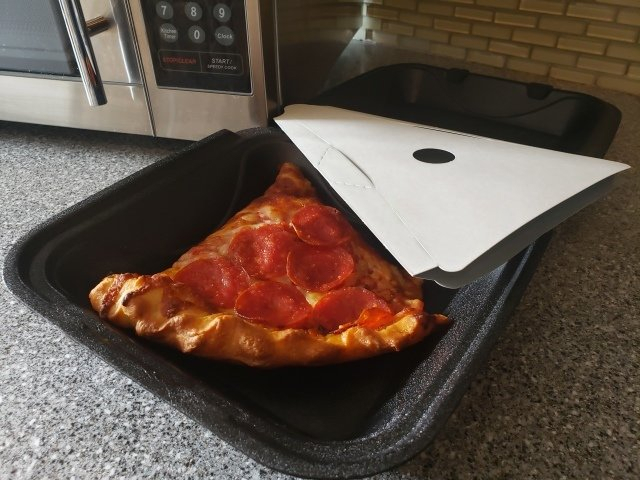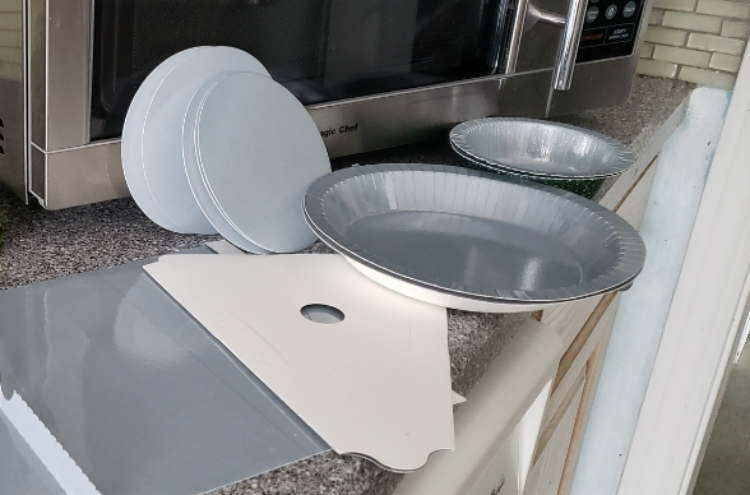Leftover pizza is a unique food group. Second-day cold slices for breakfast or lunch can be a treat, but they’re just not the same as hot, crispy pizza fresh from the oven. In most cases, reheating day-old pizza doesn’t end well. However, a new product from Cleveland chef and inventor Phil Davis could help pizza lovers resurrect leftover slices nearly to their original taste and texture.
Earlier this year, leftover pizza was on the list in an article about nine foods you shouldn’t cook in a microwave. “Microwaving leftover pizza is a common guilty pleasure,” I wrote, “but it never tastes as good as a fresh pie.”
Three days later, an email from Davis appeared in my inbox. “I am happy to let you know that if you had been aware of my invention that your story would have had a decidedly more upbeat [tone] about 8 out of the 9 foods you originally deemed “unmicrowavable,” Davis wrote.
“As a food technology inventor,” Davis continued, “I am set to launch the BRILLER Cooking System (BCS) that will allow anyone, from chefs to consumers, to transform the microwave from a static appliance into a multi-purpose appliance that will reheat foods faster and, in most cases, make them taste better than conventional cooking and reheating methods.”
The Briller Cooking System consists of paper sleeves, squares, and small dome-like bowls lined with a metallic film with Davis’ patent-pending susceptor technology. Susceptor material absorbs microwave oven electromagnetic energy and converts it to heat that transfers via conduction to food that touches the surface or by infrared radiation to food with an air gap from the susceptor surface. Hot Pockets stuffed bread convenience food products, for example, use a form of susceptor technology in their crisping sleeves.
Davis sent Digital Trends a few BCS samples with directions on how to cook a variety of foods, from eggs to burgers. Our focus was on pizza, however, and we used all of our samples accordingly. Following Davis’s written instructions, we used the Briller sleeves to microwave single slices of leftover pizza, frozen pizza, and typical grocery store take-and-bake pizza.
We used a 1,000-watt microwave oven and a Super-Fast ThermaPen food thermometer to be sure the two previously uncooked forms of pizza reached the recommended internal temperature (190 degrees). We also took Davis’s suggestion to spray the inside of the sleeves with oil for crispier crust and easier removal.
We were extremely pleased with the results of our pizza cooking and reheating with the Briller sleeves. Leftover pizza took just one minute of microwave cooking at 90% power.
We disregarded the packaged instructions with our frozen and take-and-bake pizzas and followed the BCS recommendations — confirming the temperatures with the ThermaPen. Frozen pizza took just three minutes to cook with the microwave set to 80% power. The take-and-bake pizza cooked in two and a half minutes at 80% power.
The Briller Cooking System sleeves produced delicious, hot, and crisp pizza slices. If we were cooking for a crowd, it wouldn’t be as convenient to cook each slice separately as to cook a whole pie in the oven. For next day snacking or cooking only a few slices, however, the total time would still be less than conventional cooking with a regular or microwave oven.
Because the Briller sleeves are for one-time use, we wonder about the environmental issue of using and discarding a sleeve for every slice, but the net energy savings may still work out because the Briller sleeves cut the cooking times significantly.
Briller Cooking System sleeves, squares, and domes are available now for pre-order on the company website, with starter packs of 25 items for $5.00. According to Davis, shipping is scheduled to begin mid-August.





